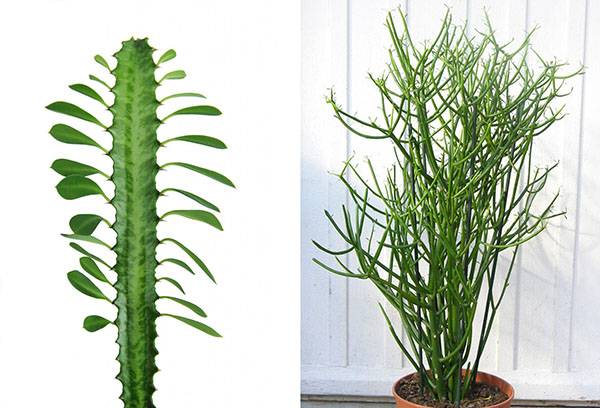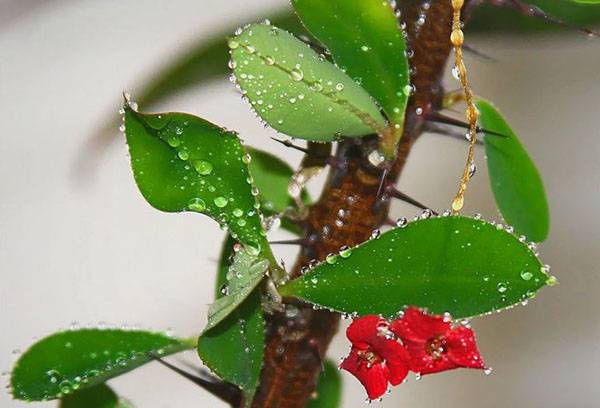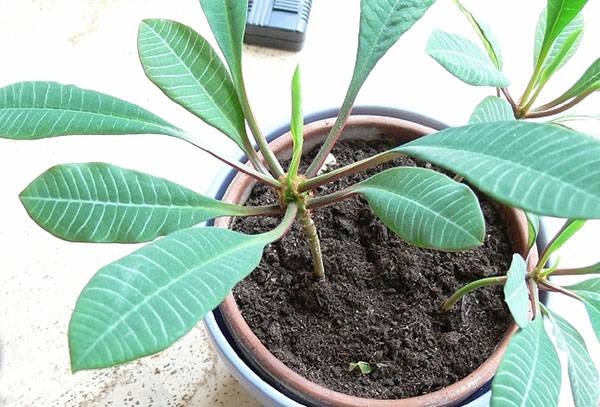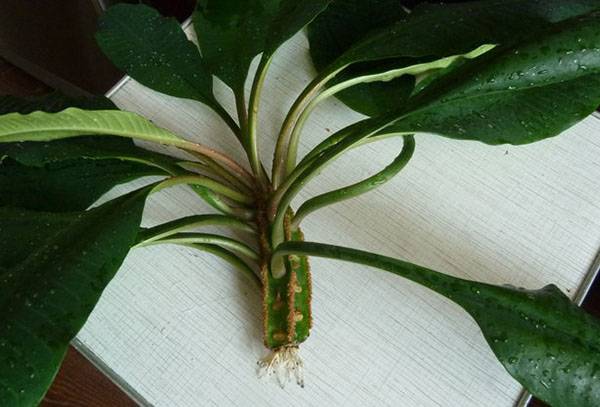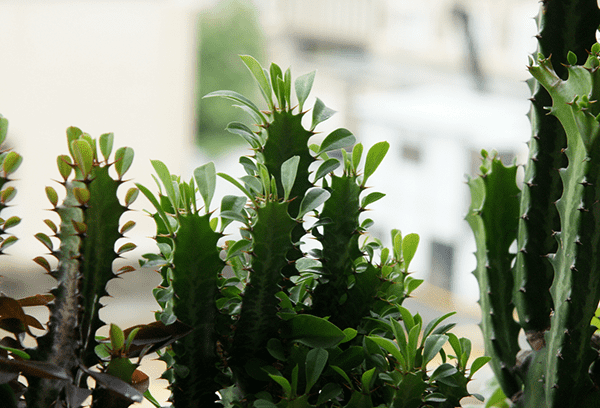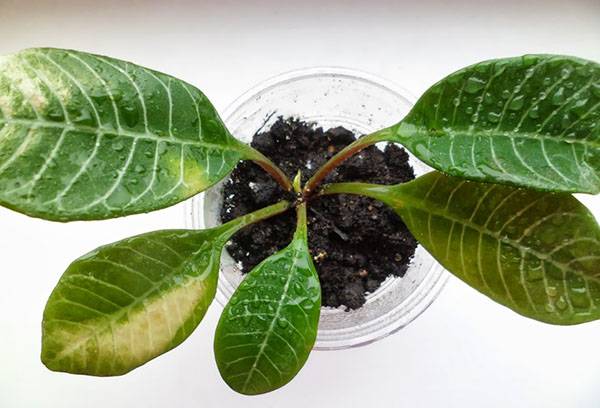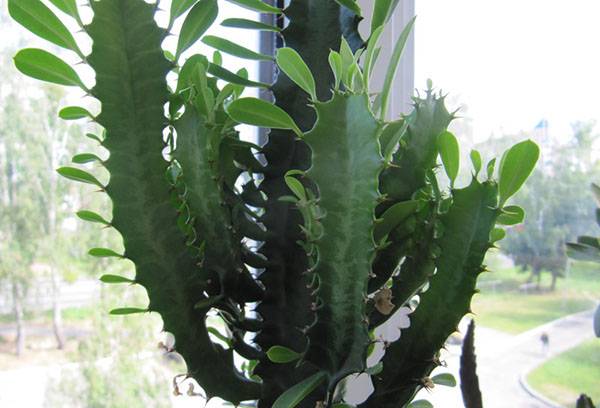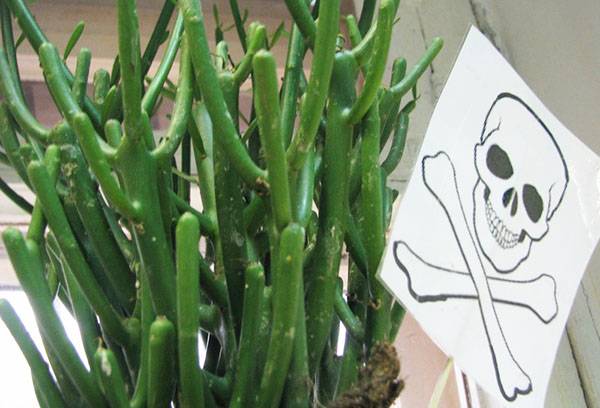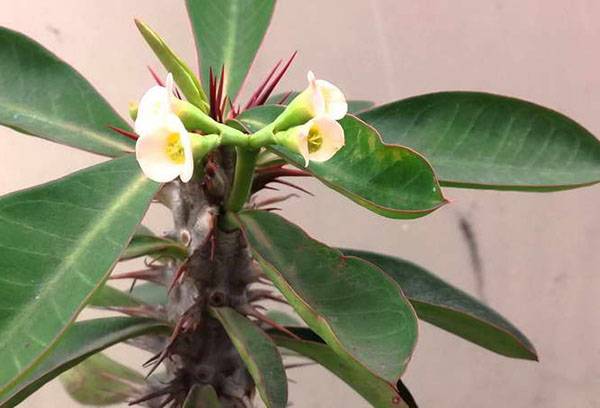What is the danger of euphorbia and how to care for it?
Content:
The Euphorbiaceae family is an extensive group of plants that unites about 2,000 species. At the same time, all representatives of euphorbiaceae differ from each other, because among them there are both annual and perennial trees, shrubs and grasses. They differ in appearance. The main unifying feature is the white juice of the plant. All species originated in different regions - Africa, South America, Madagascar. Another homeland is the Canary Islands. Since ancient times, euphorbia has been an ingredient in the preparation of medicines.
Euphorbia is also represented by several species. But caring for everyone is about the same. The plant is not very demanding, but the lack of necessary conditions can cause a slowdown in the growth and development of diseases.
Description and types
The most famous are the following varieties of milkweed, which differ in the shape of the leaves, the presence or absence of thorns, and other features.
- Brilliant Euphorbia. This is a fairly large shrub, on which there are thorns. It has tall shoots, and on their tips are leaves - oval, elongated, not more than five centimeters in length. The flowers are small in size, but they are collected in beautiful inflorescences.
- White-eared Euphorbia received this name because of the main feature of its appearance - white veins clearly stand out on the leaves of dark green color. But they are noticeable only on a young plant. With increasing leaf sizes, the veins are becoming less noticeable. Another feature is that in an adult milkweed the leaves growing on the lower part of the shoot die off. Due to the fact that the leaves remain only at the top, the flower resembles a palm tree.
- Ribbed, or comb, Euphorbia received such names because of the shape of its trunk. Leaves also remain only on the tops. Its main difference from the previous species is that small flowers also grow on the tops, while they break through the leaves.
- Triangular Euphorbia so named because of the shape of the shoots. Leaves also grow closer to the top. In this case, you can show imagination and create different forms of this flower by pinching.
- Euphorbia Tirucalli differs in a tree form. Its shoots look like thin branched sticks. Only young plants have leaves; they fall away with age. The flowers are small, yellow.
- Leaves fringed milkweed change color during flowering - their edges gradually turn white.
- Poinsettia. Few people realize that this is also a type of milkweed - it is also called the most beautiful. It is considered a traditional Christmas plant. Its feature is the combination of leaf colors - green and red.
Care
At home, it is not so difficult to create an atmosphere suitable for the proper growth and development of milkweed.
- Do not rush to transplant it immediately after purchase. A transplant can be made only in a certain period - in the spring. In other seasons, this is only possible if absolutely necessary. For example, if you bought a flower not in a full pot, but in a carrying container.
- If you did not find soil specifically designed for this kind of plant, then you can use the soil for cacti. But this may not be at hand - then you have to cook the mixture yourself. The main thing is to remember that the soil for milkweed should be loose and pass moisture well. Combine humus, sand and leafy soil. At the bottom of the pot you need to make a drain. To do this, lay out small pebbles.
- Milkweed should be fed only during flowering, that is, in spring and summer. In this case, one procedure per month is sufficient. Potassium mixtures are suitable for these plants. Also milk milk does not hurt the addition of growth stimulants, such as "Kornevin."
- The ideal temperature for a flower is 25 degrees. However, he will survive the higher quite normal. But he is intolerant of low temperatures. The best indicator in winter is 12 degrees. Below 10 are dangerous conditions for the flower.
- Without enough light, the euphorbia will grow poorly, so it is best to place it closer to the window. But the rays should not hit the flower directly - burns on the leaves are possible. Cover the window with tulle or a special film.
- Watering should be moderate. Euphorbia will survive a lack of moisture better than an excess. In the summer, one watering per week is enough, and in winter it can generally be stopped or reduced to once a month. In extreme heat, you can spray the flower.
Propagation by seeds and cuttings
There are three main methods for propagating this houseplant:
- by seeds;
- cuttings;
- dividing the bush.
Reproduction by seeds is a rather laborious process. Yes, and it is not suitable for all types of milkweed (most optimal for white-veined). The sequence of actions is as follows:
- prepare the soil mixture, warm it in the oven, pour into a pot and moisten well;
- collect seeds;
- distribute them on the surface of the soil, lightly sprinkle with earth;
- cover with a film;
- put the pot in a bright place (room temperature should be about 25 degrees);
- open the film briefly every day to ventilate the landing;
- monitor soil moisture, water if necessary;
- after about two months, seedlings will appear - they need to be transplanted into a permanent pot.
When propagating by cuttings, there are two options.
- The use of stem cuttings. To do this, cut off a shoot about 12 centimeters long. Dip it in water. When the juice ceases to stand out from the stem, treat the cut area with charcoal and leave it for several days so that the wound is overgrown. Then treat the cut with a growth stimulant and stick the cuttings in well-watered soil. After about two weeks, he will take root.
- Another option is using leaves. Tear off (just do not use blades) a leaf. Then proceed as in the previous case - dip in water, sprinkle with charcoal, treat with a growth stimulator. It’s better to plant the leaf in mineral wool, and put it in sand. Do not forget about watering. The roots will appear in about a month.
Tip
Milkweed propagation must be done in the spring.
Reproduction by dividing the bush
But for reproduction by dividing the bush, not only the spring period, but also autumn is suitable. It is best to use this method to propagate brilliant milkweed. The procedure is as follows.
- Remove the flower from the pot.
- Inspect the roots - if there are damaged and rotten, get rid of them.
- Divide the stems and roots into several parts. It is advisable to do this manually, and not cut the flower. If you cannot divide this way, use a knife or other sharp object. But be sure to treat it so as not to introduce bacteria.
- After separation, sprinkle the cut with charcoal.
- Seed the pieces in separate pots filled with drainage and soil.
Most likely, in the coming year after such a transplant, the euphorbia will not bloom, but this is a normal situation.
Diseases and Pests
If you do not care for milkweed correctly, then it is possible for him to develop a number of diseases.
- An insufficient amount of light will cause a discoloration of the sheet plates. Gradually, they will become paler. The next stage of this ailment is the rapid fall of leaves.
- Similar effects occur with insufficient watering of the flower.
- But excess watering will lead to rotting of the roots.
- Sudden changes in temperature, as well as the appearance of drafts will lead to the gradual withering of the whole flower.
- Black spots on the leaves are a sign of fungal disease.
Euphorbia is loved by many pests. Almost everyone can be dealt with using purchased or home remedies.
- Mealybug. A sign of its appearance is a white coating on the plant. First of all, you need to get rid of pests mechanically, that is, collect them by hand. To remove the remaining insects and prevent their appearance, treat the plant with soapy water every week. You can also use tinctures of garlic or calendula.
- Together with a scale shield, white and yellow spots appear on the leaves. It is better to get rid of it with special poison from a store for gardeners.
- Destroy aphids will help infusions of garlic, onions and peppers.
The benefits of milkweed
Even in antiquity, spurge began to be used as a medicine for many ailments. In our time, traditional medicine has not lost its popularity, so many recipes with milkweed have remained known.
- For example, with its help you can get rid of warts. To do this, prepare a decoction. First you need to collect the shoots of milkweed and dry them. Dry grass needs a little chop. For the present, take a teaspoon of prepared milk and pour half a liter of boiling water over it. After half an hour, strain the infusion. Use it for baths.
- This flower will help with digestive problems. To prepare such a therapeutic infusion, you need a dried root. 5 grams of root pour half a liter of water at room temperature and boil for 10 minutes. Pour into a convenient container. Drink a tablespoon before each meal.
- To strengthen immunity, you can use alcohol tincture. For 10 grams of root, you need half a liter of vodka. Insist means should be 10 days in a dark cupboard. Take 15 drops thrice a day.
Important!
Remember that even before using folk recipes, you need to consult a doctor.
What is the danger of euphorbia?
Although euphorbia is used in medicine, it is quite dangerous. All because of its poisonous juice. Contact with mucous membranes or wounds causes severe burning, rash, burns. If juice enters the body, even death is possible. Therefore, before preparing the medicine, the euphorbia must be processed, it is necessary to get rid of the juice.
Particular care must be taken in a house where there are pets or small children. In this case, it is better to get rid of milkweed or put it in a place where it is difficult to get to it. The animal does not cost anything to taste the milkweed leaves to taste. A child, having damaged leaves, can also be injured due to juice.
If it was not possible to defend and the juice got on the skin, you need to act quickly.
- Wash your skin with clean water, then clean it with soapy foam and rinse again.
- Drink an allergy medicine.
- When a burn occurs, you must use any ointment from this kind of damage.
- Also protect the damaged area from sunlight.
In case of severe skin damage or juice getting inside the body, be sure to contact the hospital.
Output
Euphorbia is an extensive group of plants. There are many species. But only a few of them are suitable for growing in the house. It’s easy to take care of milkweed - you need the right soil, average temperature, infrequent watering, fertilizers, proper lighting. The rules are simple, but if they are violated, the plant may become ill. It is also important to protect it from pests.
Euphorbia is often used in folk medicine, but you should not use it without the permission of a doctor. Milkweed juice is very dangerous.
